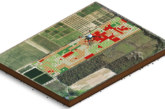
Global shipments of wearable devices are expected to total 396.0 million units in 2020 according to new data from the International Data Corporation (IDC) Worldwide Quarterly Wearable Device Tracker.
This marks a 14.5% increase from the 345.9 million units shipped in 2019. Looking ahead, IDC forecasts shipment volume to have a five-year compound annual growth rate (CAGR) of 12.4% and total 637.1 million units in 2024.
The first half of 2020 delivered positive results despite the impact of COVID-19 on the global economy. Even though vendors scaled down production and end users were quarantined, demand for wearables remained steady. The market was propelled by near-record demand for hearables, which was enough to offset slightly lower demand for watches and wristbands. The second half of 2020 is on pace to continue this trend and with the launch of new products – including hearables, watches, and wristbands – from multiple vendors, the wearables market is on track to reach nearly 400 million units this year.
Beyond devices, one trend to watch is the emergence of services to complement wearables. Apple’s recently announced Fitness+, Amazon’s new Halo, and Fitbit’s Fitbit Premium connect users with health and fitness content (i.e., guided workouts, coaching, and diet advice) while incorporating data from their wearable device. Several other companies are taking a different route, showing enterprise customers how to keep their employees physically distant and detect early signs of potential illness. These services and others to come will increase the demand for wearables.
Ramon T. Llamas, research director, Mobile Devices and AR/VR, said:
“Wearable devices and services will evolve together in the coming quarters. Wearables are the perfect device to collect user data and services provide guidance and actionable insight. Together, they offer the user a virtual coach to make better decisions and achieve their goals.”
“Device makers are also laying the groundwork that will allow consumers to use multiple wearables in conjunction with each other,” said Jitesh Ubrani, research manager for IDC Mobile Device Trackers. “Imagine tying positional and audio input from hearables with health metrics from the wrist to gauge a user’s level of attention or excitement in the surrounding environment. That’s a powerful new experience that can bring added utility to consumers and vendors alike.”
Category Highlights
Hearables* will account for the majority of shipments throughout the forecast while posting a market beating CAGR of 14.1%. A combination of drivers will sustain hearable growth: an expanding list of vendors with a growing number of devices; smartphones abandoning the 3.5mm headphone jack in favor of Bluetooth connections; lower prices; and an expansion of use cases beyond audio content consumption, like health and fitness monitoring, smart assistants, and connection to home and work IoT systems.
Watches**, comprised of smartwatches and basic watches, will experience the highest CAGR at 14.3%. The smartwatch market will see its operating system (OS) landscape shift as Google’s WearOS acquires FitbitOS to bolster its health and fitness offerings and new vendor partners are added to its list. Samsung’s Tizen will slowly gain share with its own fitness-focused and productivity-driven Galaxy watches. At the top is Apple’s watchOS, which will benefit from the introduction of its new Watch SE, sitting between its premium and entry-level devices. Meanwhile, basic watches will benefit from kids’ connected watches alongside hybrid- and GPS-equipped watches.
Wristbands will slowly crawl upward with shipments growing at a CAGR of 2.4%. Even as average selling prices dip below $40 USD by the end of the forecast, there will still be space for more expensive models whose feature sets closely mimic those found on smartwatches, including mobile payments, smartphone notifications, and advanced fitness features. Still, the primary driver for wristband shipments will be inexpensive step- and calorie counters.
| Product | 2020 Shipments | 2020 Market Share | 2024 Shipments | 2024 Market Share | 2020-2024 CAGR |
| Hearables* | 234.3 | 59.2% | 396.6 | 62.8% | 14.1% |
| Watch** | 91.4 | 23.1% | 156.0 | 24.7% | 14.3% |
| Wrist Band | 67.7 | 17.1% | 74.4 | 11.8% | 2.4% |
| Others | 2.6 | 0.6% | 4.8 | 0.8% | 16.7% |
| Total | 396.0 | 100.0% | 631.7 | 100.0% | 12.4% |
- Track health/fitness
- Modify audio, and not just noise reduction
- Provide language translation on the device
- Enable smart assistants at the touch of a button or through hotword detection even if the assistant is running on another device such as a smartphone







